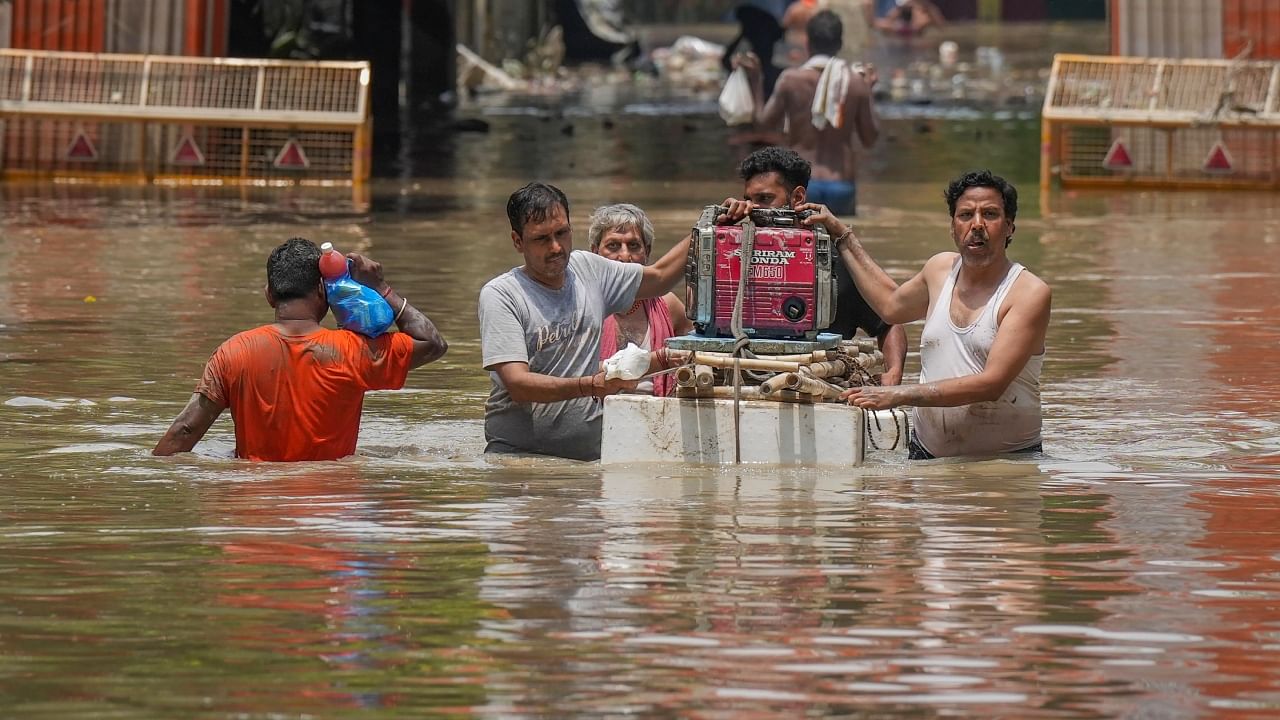
The havoc of the torrential rains that lashed Himachal Pradesh, Punjab, Haryana, Chandigarh, Uttarakhand and Delhi is yet another agonising reminder of the price we pay for our haphazard urban development. While the loss suffered by these states is yet to be computed, one estimation of the impact of the deluge on businesses in just Himachal Pradesh is pegged upwards of Rs 4,000 crore. This is apart from the infrastructural damage that comes with its own bill.
According to environmental policy and urban planning experts, anthropogenic climate change is the underlying cause of the extreme precipitation conditions - fueled by rampant urbanisation, illegal constructions, large-scale deforestation and changing land usage patterns.
“Today there is no city in India that does not have floods. This is a direct consequence of unplanned urbanisation which is focused on concretisation without maintaining the sanctity of lakes and the water pathways, or drains,” argued Srinivas Alavilli, Fellow - Integrated Transport and Road Safety, WRI India.
“While India has an ambitious net zero agenda and impressive policies in place, there are loopholes in the system that are leveraged by stakeholders at local bodies quite often,” underscored environment policy expert Vivek Gurav, adding that we are continuously bypassing green laws and warnings given the environment.
Better city planning and preparedness were among the top concerns expressed by the industry players.
The price paid
“The initial estimate of losses in Himachal Pradesh (in trade and commerce) is Rs 4,000 crores so far, but it can go well above Rs 6,000-Rs 8,000 crores as we return to normalcy,” Gagan Kapoor, Chairman- Confederation of Indian Industries, Himachal Pradesh, told DH.
Estimated losses for Punjab could be in the range of Rs 500 - Rs 1,000 crore, underscored Amit Thapar, immediate past chairman of CII - Punjab and president of Ganga Acrowools Limited, a major exporter of yarn from Punjab. Losses for Thapar’s own business amounted to upwards of Rs 50 lakh in the past week.
As many as 14 districts in Punjab have been deeply impacted, including core manufacturing districts of Ludhiana, Sangrur and Jalandhar. “Significant supply chain disruptions because of the jams and blockade at Ambala have led to inventory pile-ups,” added Thapar.
Estimated losses reportedly stood at Rs 200 crore for Delhi, according to traders’ body Chamber of Trade and Industry (CTI). “The impact in Delhi - which sees a larger share of the service industry - is a lot less than in HP, Uttarakhand and Punjab which are the top three affected states,” said Puneet Kaura, chairman of CII - Delhi.
Beyond affecting mobility temporarily, the floods also washed away roads and bridges connecting industrial areas of Punjab and Haryana to the national capital. “The lifeline bridge of our biggest industrial area, the BBNDA - Baddi Barotiwala Nalagarh Development Area has been washed away,” said Kapoor. Similar is the case with the Sangrur-Delhi highway, which connects several industrial areas of Punjab to Delhi.
Power supply disruptions were another challenge to contend with. “Though we have electricity restored after three days, the transformers are in bad shape- they are half in the air, half on the ground,” attested Kapoor.
What next?
Experts predict it will take more than 3-4 weeks for normalcy to return in full swing, provided there are no further surprises.
In fact, industrialists are today looking for infrastructural relief rather than any monetary help. “They are looking for restoration of road connectivity, electricity and water supply,” Kapoor stressed.
“We fear an outbreak of diseases due to the water logging in the low-lying areas, where many of our workers come from,” Thapar shared.
Experts also recommended the distribution of urbanisation efforts across smaller pockets instead of concentrating on further saturation of the few megacities.
“There are limits to how far a city can grow. We should have 100-200 big cities instead of 5-6 metro cities,” argued Alavilli.